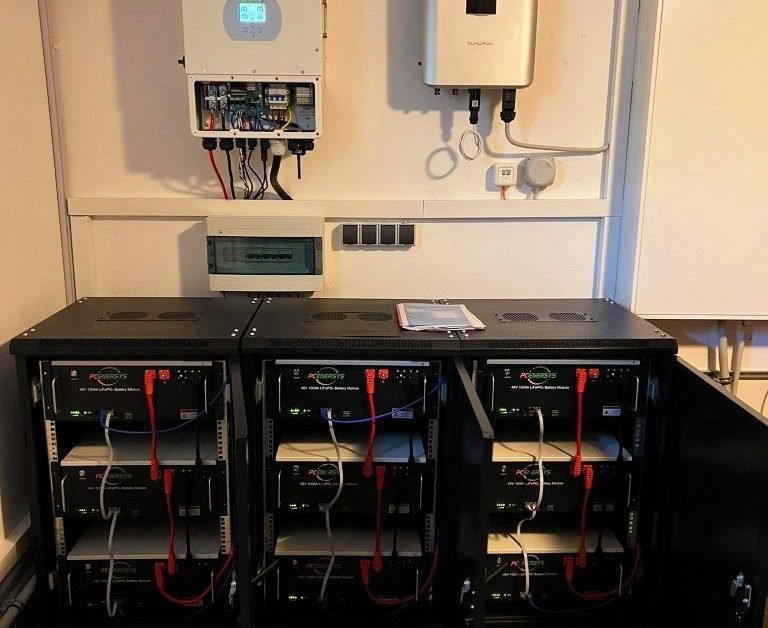In the dynamic landscape of telecommunications, a reliable power source is the backbone that ensures uninterrupted connectivity. Over the years, the evolution of telecom batteries has played a pivotal role in sustaining this crucial infrastructure. From traditional lead-acid batteries to cutting-edge lithium-ion technology, the journey has been transformative.
Evolution of Telecom Batteries
The history of telecom power sources dates back to the early days of communication networks. Initially relying on basic batteries, the industry witnessed a paradigm shift with the introduction of advanced technologies. This evolution became a catalyst for improved efficiency and reduced downtime.
Significance of 48V Telecom Battery
Amidst various voltage configurations, the 48v telecom battery system emerged as a cornerstone in telecom infrastructure. Its significance lies in its optimal balance between power requirements and equipment compatibility. Unlike other voltage options, the 48V system proves to be a reliable and standardized choice.
Understanding 48V 100Ah Lithium-Ion Battery
Lithium-ion batteries have become synonymous with efficiency and longevity. A 48V 100Ah lithium-ion battery takes these advantages to the next level. With its specific design and capabilities, it stands as a beacon of power storage in the telecom realm, ensuring a stable and enduring energy supply.
Key Applications
The applications of 48V telecom batteries are diverse, spanning across telecommunications, data centers, and renewable energy systems. Their versatility makes them indispensable in scenarios where a consistent power supply is non-negotiable.
Benefits of 48V Lithium-Ion Batteries
Energy efficiency is a hallmark of 48V lithium-ion batteries. Their longer lifespan, reduced maintenance requirements, and lower environmental impact make them a sustainable choice for telecom operations. The financial savings over time add to the appeal of this technology.
Challenges and Solutions
While implementing 48V lithium-ion batteries, challenges such as compatibility issues and initial costs may arise. However, proactive planning and the right expertise can overcome these hurdles, ensuring a smooth integration process.
Choosing the Right 48V Telecom Battery
Selecting the appropriate battery for telecom needs involves considering factors like capacity, discharge rate, and cycle life. A comparative analysis with other battery types aids in making an informed decision aligned with specific requirements.
Installation and Maintenance Tips
A step-by-step guide on installing 48V 100ah lithium ion battery is crucial for maximizing their efficiency. Regular maintenance practices, such as monitoring temperature and ensuring proper ventilation, contribute to prolonged battery life.
Cost Considerations
While the initial investment in 48V lithium-ion batteries may seem substantial, analyzing the long-term benefits reveals a compelling case for cost-effectiveness. The return on investment becomes evident through reduced operational costs and enhanced reliability.
Case Studies
Real-world examples of successful implementations demonstrate the tangible benefits of 48V 100Ah lithium-ion batteries. These case studies provide insights into the positive impact on telecom infrastructure and overall operational efficiency.
Future Trends in Telecom Battery Technology
The future holds exciting prospects for telecom battery technology. Innovations such as advanced energy storage and smart grid integration are poised to reshape the landscape, further enhancing the capabilities of 48V telecom batteries.
Environmental Impact
Lithium-ion technology, with its recyclability and reduced carbon footprint, aligns with environmental sustainability goals. A comparison with traditional battery options underscores the eco-friendly nature of 48V lithium-ion batteries.
Regulatory Compliance
Navigating the regulatory landscape is crucial for telecom operators. Understanding and adhering to industry standards ensures not only operational efficiency but also compliance with environmental and safety regulations.
Conclusion
In conclusion, the adoption of 48V 100Ah lithium-ion batteries marks a significant leap in powering telecom infrastructure. Their myriad benefits, coupled with ongoing advancements, position them as a cornerstone for reliable and sustainable energy solutions in the ever-evolving world of telecommunications.
